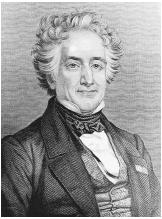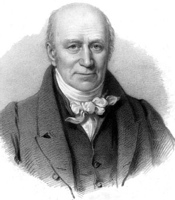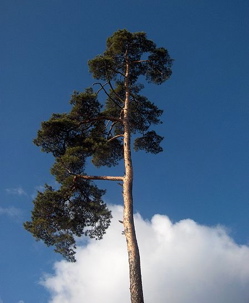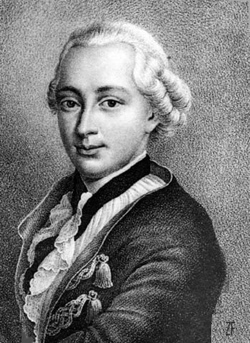Heterosis: Darwin excerpt
(From Variation of Animals and Plants under Domestication)
Theory
|
|
EUGENE M. MCCARTHY, PHD GENETICS
Darwin was well aware of the phenomenon of heterosis. The following excerpt from Variation of Animals and Plants under Domestication (Darwin, 1868: vol. II, 129-131) shows he knew non-intermediate hybrids had been repeatedly reported by a wide variety of breeders and investigators. It also provides some interesting examples of breeders' findings concerning heterosis. Here are Darwin's comments:
With respect to the benefit derived from crossing distinct varieties, plenty of evidence has been published. [Augustin] Sageret repeatedly speaks in strong terms of the vigour of melons raised by crossing different varieties, and adds that they are more easily fertilised than common melons, and produce numerous good seed. Here follows the evidence of an English gardener:
 |
| Eugène Chevreul (1786-1889) was cited by Darwin as having reported heterosis |
 |
| Thomas Andrew Knight — President of the Royal Horticultural Society. One of the first plant breeders to intentionally exploit heterosis. |
[Thomas] Andrew Knight believed that his seedlings from crossed varieties of the apple exhibited increased vigour and luxuriance; and M. Chevreul alludes to the extreme vigour of some of the crossed fruit-trees raised by Sageret.
By crossing reciprocally the tallest and shortest peas, Knight says,
Arend Friedrich] Wiegmann made many crosses between several varieties of cabbage; and he speaks with astonishment of the vigour and height of the mongrels, which excited the amazement of all the gardeners who beheld them. Mr. Chaundy raised a great number of mongrels by planting together six distinct varieties of cabbage. These mongrels displayed an infinite diversity of character; "But the most remarkable circumstance was, that, while all the other cabbages and borecoles in the nursery were destroyed by a severe winter, these hybrids were little injured, and supplied the kitchen when there was no other cabbage to be had.
Mr. [Benjamin] Maund exhibited before the Royal Agricultural Society specimens of crossed wheat, together with their parent varieties; and the editor states that they were intermediate in character,
Knight also crossed several varieties of wheat, and he says

|
|
Austrian Pine — Pinus nigra (click to enlarge) Credit: Andre Engels |

|

|
|
Joseph Kölreuter — One of the first scientists to document heterosis in plants |
Here is a remarkable case: M. Clotzsch crossed Pinus sylvestris [Scot's pine] and nigricans [now Pinus nigra, Austrian pine], Quercus robur and pedunculata [these two oaks are now usually treated as conspecific], Alnus glutinosa [European alder] and incana [gray alder], Ulmus campestris [English elm] and effusa [European white elm]; and the cross-fertilised seeds, as well as seeds of the pure parent-trees, were all sown at the same time and in the same place. The result was, that after an interval of eight years, the hybrids were one-third taller than the pure trees!
The facts above given refer to undoubted varieties, excepting the trees crossed by Clotzsch, which are ranked by various botanists as strongly-marked races, sub-species, or species. That true hybrids raised from entirely distinct species, though they lose in fertility, often gain in size and constitutional vigour, is certain. It would be superfluous to quote any facts; for all experimenters, Kölreuter, Gärtner, Herbert, Sageret, Lecoq, and Naudin, have been struck with the wonderful vigour, height, size, tenacity of life, precocity, and hardiness of their hybrid productions. Gärtner sums up his conviction on this head in the strongest terms. Kölreuter gives numerous precise measurements of the weight and height of his hybrids in comparison with measurements of both parent-forms; and speaks with astonishment of their 'statura portentosa,' [luxuriance] their 'ambitus vastissimus ae altitude valde conspicua' [extreme height and girth]. Some exceptions to the rule in the case of very sterile hybrids have, however, been noticed by Gärtner and Herbert; but the most striking exceptions are given by Max Wichura who found that hybrid willows were generally tender in constitution, dwarf, and short-lived ["negative" heterosis].
Kölreuter explains the vast increase in the size of the roots, stems, etc., of his hybrids, as the result of a sort of compensation due to their sterility, in the same way as many emasculated animals are larger than the perfect males. This view seems at first sight extremely probable, and has been accepted by various authors; but Gärtner has well remarked that there is much difficulty in fully admitting it; for with many hybrids there is no parallelism between the degree of their sterility and their increased size and vigour [heterosis]. The most striking instances of luxuriant growth have been observed with hybrids which were not sterile in any extreme degree. In the genus Mirabilis [four-o'clocks], certain hybrids are unusually fertile, and their extra-ordinary luxuriance of growth, together with their enormous roots, have been transmitted to their progeny. The increased size of the hybrids produced between the fowl and pheasant, and between distinct species of pheasants, has been already noticed. The result in all cases is probably in part due to the saving of nutriment and vital force through the sexual organs not acting, or acting imperfectly, but more especially to the general law of good being derived from a cross. For it deserves especial attention that mongrel animals and plants, which are so far from being sterile that their fertility is often actually augmented, have, as previously shown, their size, hardiness, and constitutional vigour generally increased.
Most shared on Macroevolution.net:
Human Origins: Are we hybrids?
On the Origins of New Forms of Life
Mammalian Hybrids
Cat-rabbit Hybrids: Fact or fiction?
Famous Biologists
Dog-cow Hybrids
Georges Cuvier: A Biography
Prothero: A Rebuttal
Branches of Biology
Dog-fox Hybrids